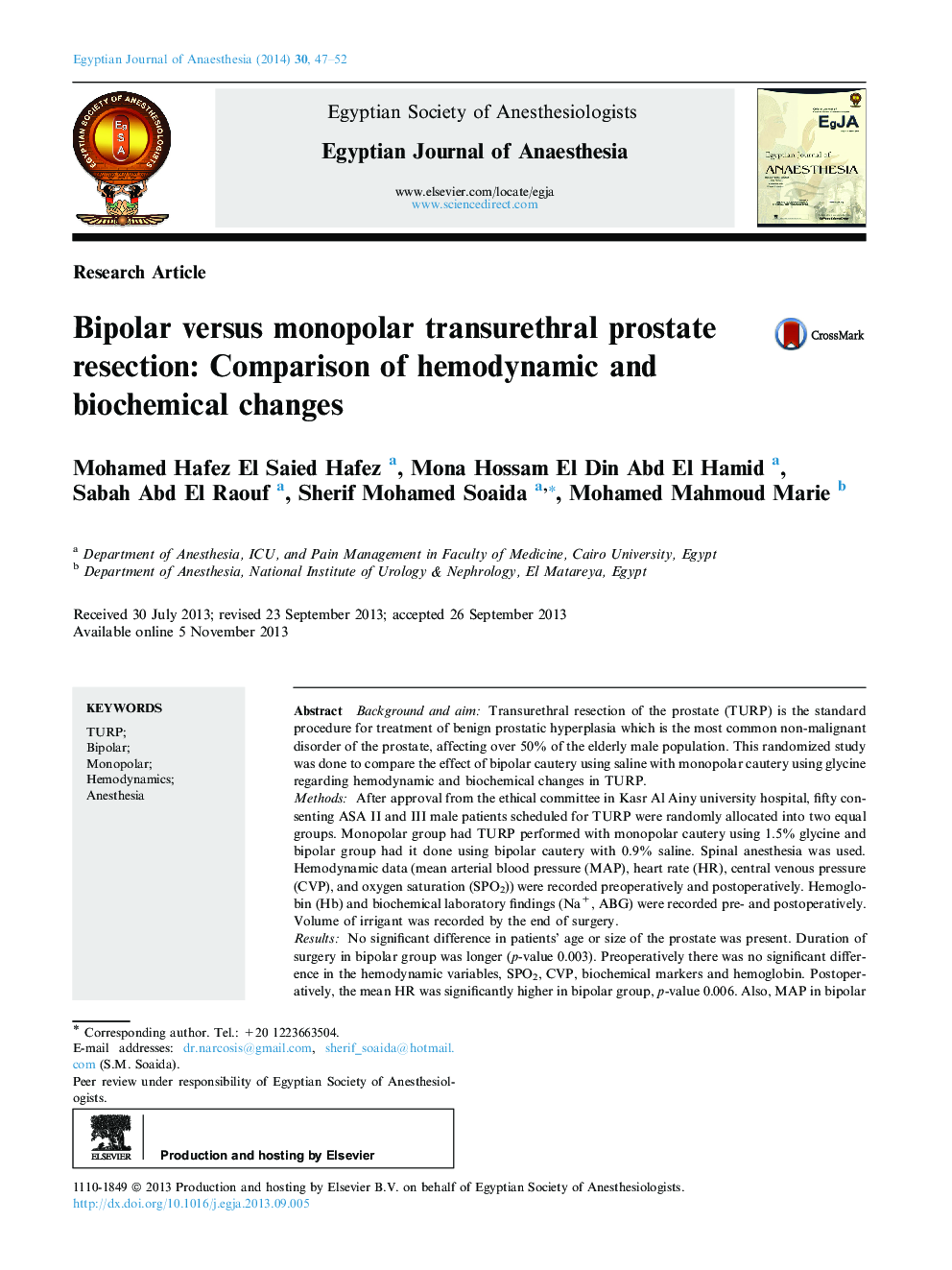| Article ID | Journal | Published Year | Pages | File Type |
|---|---|---|---|---|
| 2756339 | Egyptian Journal of Anaesthesia | 2014 | 6 Pages |
Background and aimTransurethral resection of the prostate (TURP) is the standard procedure for treatment of benign prostatic hyperplasia which is the most common non-malignant disorder of the prostate, affecting over 50% of the elderly male population. This randomized study was done to compare the effect of bipolar cautery using saline with monopolar cautery using glycine regarding hemodynamic and biochemical changes in TURP.MethodsAfter approval from the ethical committee in Kasr Al Ainy university hospital, fifty consenting ASA II and III male patients scheduled for TURP were randomly allocated into two equal groups. Monopolar group had TURP performed with monopolar cautery using 1.5% glycine and bipolar group had it done using bipolar cautery with 0.9% saline. Spinal anesthesia was used. Hemodynamic data (mean arterial blood pressure (MAP), heart rate (HR), central venous pressure (CVP), and oxygen saturation (SPO2)) were recorded preoperatively and postoperatively. Hemoglobin (Hb) and biochemical laboratory findings (Na+, ABG) were recorded pre- and postoperatively. Volume of irrigant was recorded by the end of surgery.ResultsNo significant difference in patients’ age or size of the prostate was present. Duration of surgery in bipolar group was longer (p-value 0.003). Preoperatively there was no significant difference in the hemodynamic variables, SPO2, CVP, biochemical markers and hemoglobin. Postoperatively, the mean HR was significantly higher in bipolar group, p-value 0.006. Also, MAP in bipolar group was higher, and p-value was 0.001. Postoperatively, the mean serum Na+ level and mean Hb were significantly lower in monopolar group, p-value 0.002 and 0.013 respectively. Although there was no significant difference in both SPO2 and CVP of both groups postoperatively, the increase in CVP in monopolar group was significantly higher.ConclusionsBipolar TURP causes less drop in serum sodium and hemoglobin level and less fluid overload than monopolar TURP. However, it takes longer resection time.
